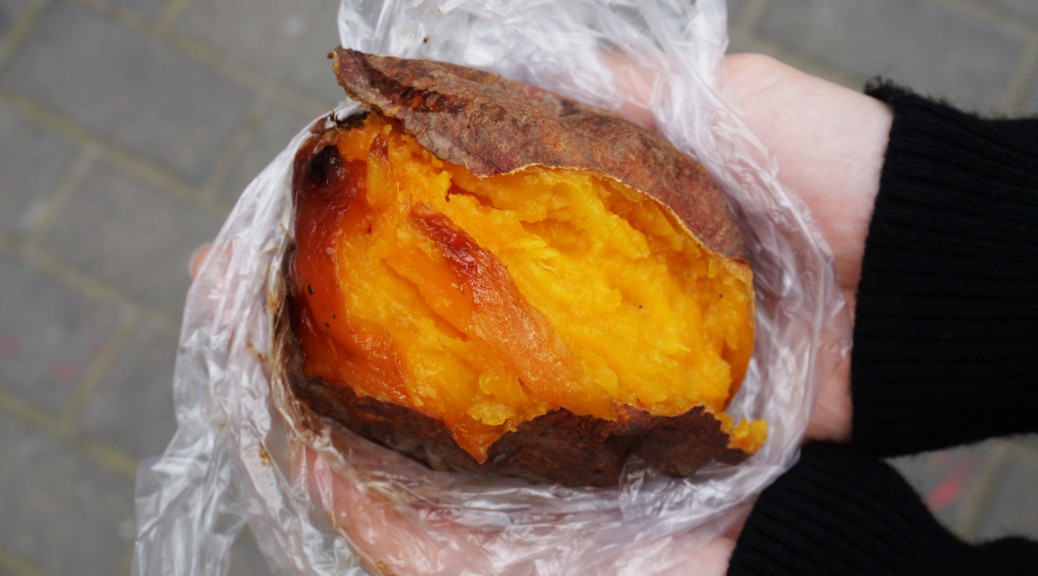For local Shanghainese, kǎo dì guā (Chinese: 烤地瓜) is a favorite street snack during colder months of the year. Vendors usually grow the potatoes themselves, and wheel around a modified barrel oven filled with coal to slowly roast them inside. Once the potatoes are done roasting, they are showcased on top of the heated iron bin usually alongside roasted corn on the cobs. Patrons can choose which potato they want before it is weighed and priced.
Traditional Chinese medicine encourages the consumption of kao di gua during winter because it helps the body remove the season’s dryness. They also are high in nutritional value, considering their fiber content, complex carbohydrates, protein, vitamin A and C, iron, and calcium.
When choosing the best sweet potato, those that have a wrinkly skin that gives in when poked with a finger are usually sweeter and more moist. The soft texture comes from the potato’s high sugar content.
Ingredients:
Sweet potatoes are roasted without any additives for its natural sweetness forms during the roasting process.
Cooking Method:
Sweet potatoes are placed inside an iron barrel heated with coal at the bottom. After they are done roasting, they are showcased on the barrel’s heated lid.
History:
In Jinan, the capital city of Shandong province in Eastern china, a story was told about the emperor Qianlong, and kao di gua. He lived to be 80 years old, making him the oldest emperor to live. Due to his old age, he began to suffer from constipation. His doctors tried many ways to cure his misery, but none succeeded. One day, he was lured into the royal dining room by the sweet aroma of sweet potato. He saw the eunuch roasting them, so he tried one and enjoyed it so much that he wanted to eat it everyday. Gradually, his constipation was cured. Today, this story is told as a solution to people’s constipation.
Related Cuisine:
Shandong Cuisine
